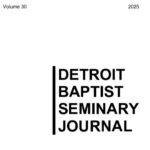The More Things Change, the More They Stay the Same
 Among the Oxyrhynchus Papyri, there is a rather troubling document dated from the year 1 B.C. It’s a letter written by a husband to his wife. The husband is out of town, and the wife is apparently expecting to deliver a child in the near future. Here’s the text:
Among the Oxyrhynchus Papyri, there is a rather troubling document dated from the year 1 B.C. It’s a letter written by a husband to his wife. The husband is out of town, and the wife is apparently expecting to deliver a child in the near future. Here’s the text:
Hilarion to his sister Alis, many greetings, also to my lady Berous and Apollonarion. Know that I am still in Alexandria; and do not worry when all the others return. I am staying in Alexandria. I ask you and entreat you, take care of the child, and if I receive my pay soon, I will send it up to you. Above all, if you bear a child and it is a male, let it live; if it is a female, expose it. You have told Aphrodisias, “Do not forget me.” But how can I forget you? Thus I’m asking you not to worry.
The 29th year of Caesar, Pauni 23 (P.Oxy. 4.744).
This letter is somewhat well-known due to its striking content. Almost as an aside, Hilarion instructs his wife that if she gives birth to a daughter, she is to expose the girl (i.e., to place her outside the city to most likely die or perhaps to be found by someone who would raise her up for whatever purpose).
Unfortunately the practice of exposing an unwanted child was all too common in the ancient world. And we look back at such a letter as shocking for its heartlessness. Perhaps we breathe a sigh of relief that in the 21st century such practices are unthinkable. But are they really?
Someone recently brought to my attention an article written by two ethicists in Australia. The article, titled “After-Birth Abortion: Why Should the Baby Live?” was published in the online version of the Journal of Medical Ethics. In this article, Alberto Giubilini and Francesca Minerva argue that “‘after-birth abortion’ (killing a newborn) should be permissible in all the cases where abortion is, including cases where the newborn is not disabled” (p. 1). They explain their rather unusual use of terms when they write, “we propose to call this practice ‘after-birth abortion’, rather than ‘infanticide’, to emphasize that the moral status of the individual killed is comparable with that of a fetus (on which ‘abortions’ in the traditional sense are performed) rather than to that of a child” (p. 2).
In the article, the authors present two reasons which they believe justify their assertion that after-birth abortions should be permissible. First, they argue that an unborn baby and a newborn baby are morally equivalent. This is so because “both lack those properties that justify the attribution of a right to life to an individual.” Second, the authors suggest that both unborn babies and newborn babies are “potential persons” not actual persons and that the interests of the actual people involved (i.e., the non-infants) should be the decisive factor in any decision about abortion or after-birth abortion.
Having presented their main argument, the authors attempt to deal with a possible objection to their proposal, namely, the idea that adoption would be a better alternative to after-birth abortion. The authors do not believe that such would necessarily be the case. They explain, “we also need to consider the interests of the mother who might suffer psychological distress from giving her child up for adoption…. After-birth abortion should be considered a permissible option for women who would be damaged by giving up their newborns for adoption” (p. 3). Having been present in hospital delivery rooms on a number of occasions and having watched many mothers interact with their newborn children in other contexts, I can’t help but think that the authors are incredibly naïve on this point. Would it really be less “distressing” or “damaging” for a mother to go through life knowing she had chosen to have her newborn baby killed than it would be for her to know that a family had been given the opportunity to raise that child? I am not discounting the challenges involved in making an adoption plan; adoption always involves tragedy of one sort or another. But the authors clearly discount the level of guilt which a mother would bear following an after-birth abortion.
In the end, Giubilini and Minerva conclude that “the same reasons which justify abortion should also justify the killing of the potential person when it is at the stage of a newborn” (p. 3). They wrap up the article with two final considerations. First, they are unwilling to state exactly when an after-birth abortion should no longer be permissible (i.e., how old is too old?). And second, they confess that early abortion is preferable to after-birth abortion. However, having made that confession they quickly follow up with a statement defending the practice of after-birth abortion: “if a disease has not been detected during the pregnancy, if something went wrong during the delivery, or if economical, social or psychological circumstances change such that taking care of the offspring becomes an unbearable burden on someone, then people should be given the chance of not being forced to do something they cannot afford” (p. 3). In other words, the authors believe that if for any reason a mother does not want to raise her newborn baby, that woman should be able to have it killed.
When I read this article a week or two ago, one of my first thoughts was that this is just an echo of the 2,000 year old letter cited at the beginning of this post. The modern journal article might be dressed up in academic clothes, but its authors are essentially arguing for the moral permissibility of what was practiced in ancient Rome. These writers may have intended to prove one thing, but more than anything else, their article illustrates the fact that apart from the grace of God the human heart is just as depraved now as it was 2,000 years ago.
*The page numbers used for citation refer to the pages of the pdf version of the article.



Your last sentence sums it up well.
Good stuff Dr. Aloisi. Thank you!